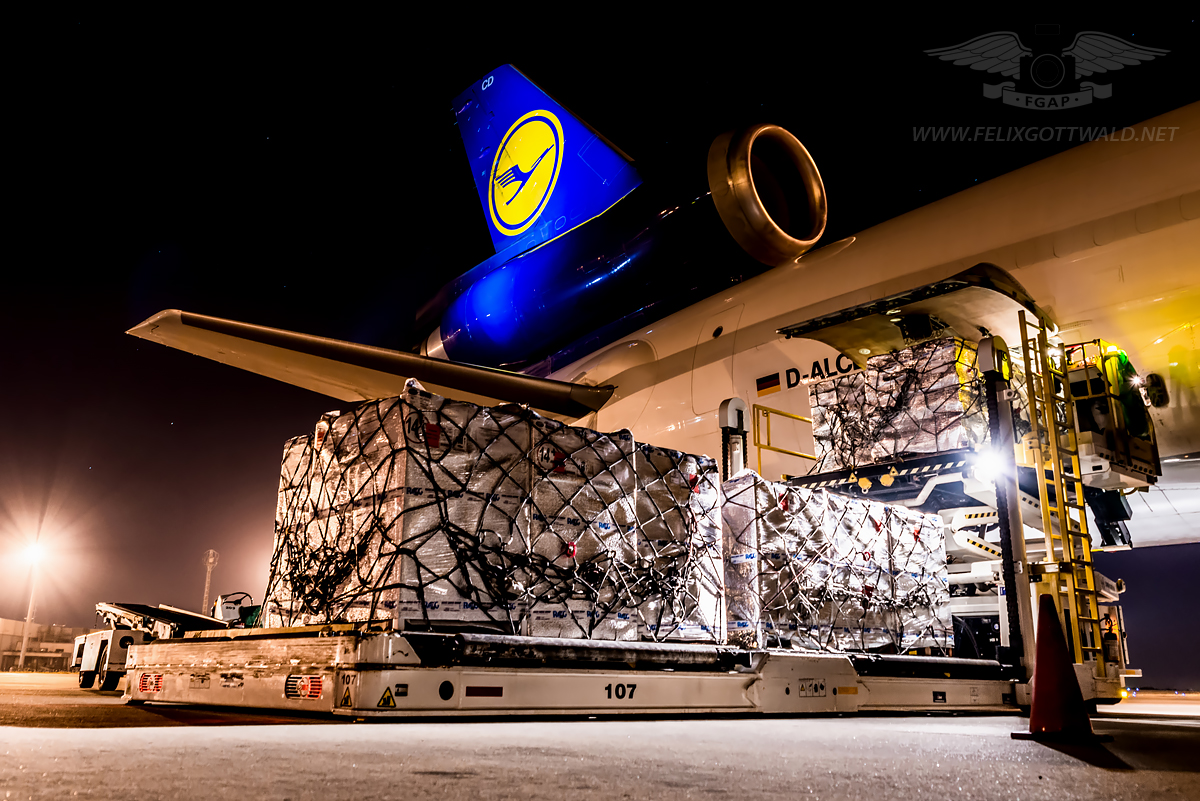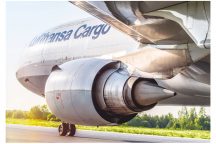Here are some of the most frequently asked questions (FAQ) that I received. Have you got a new one – let me know by writing me a message here.
Flying/MD-11/Lufthansa
Do you like to fly as a passenger?
Yes I do! I commute to work by plane (I live a 45 minute flight away from Frankfurt) and love to travel the world. This naturally includes flying and it is very interesting for me to see how everything is done at other airlines. It is also a great chance to exchange views with my colleagues in the cockpit and cabin to find out how they see the world and often this opens up new perspectives for me.
Flying as a passenger does have certain limitations compared to flying myself, but it also gives me the possibility to simply enjoy the service and relax while getting from A to B, especially on long-haul flights when I just want to sleep.
Which was your most memorable flight?
That is a tough question, but I guess it must have been my first solo flight during flight training! Once you have demonstrated that you can control the aircraft and fly patterns at the airfield without crashing, it is time to fly without anybody else on board. You are ultimately responsible for everything and there is no teacher or instructor to help you out… It is similar to driving a car alone for the first time – exciting and frightening at the same time, only much more complicated and challenging!
Besides that I had many memorable flights. I had the chance to operate a couple of maiden flights on the Airbus A320 which was always a lot of fun (because you are flying, where no man flew before – or at least something like that) and there are many more flights on which I met great people or just enjoyed work so much that I will always remember them!
What is your favourite destination?
My favourite destinations are those where I can meet friends! Every place in the world has its pros and cons. I like good food (there is nothing like an original curry in India or a flame-grilled burger in the US), but it obviously depends on the season as well – Krasnoyarsk at -40°C is tough, but the nature and light are gorgeous in spring or autumn. Dubai during the summer is terrible, but going there in winter time is quite popular among us pilots. It all depends.
How long are your duty times and layovers?
To work in the cargo business you will have to be flexible. I am usually away from home between four to seven days, however our rotations last from one to twelve days. Some of our flights are only 30 minutes long, while others will take ten hours. At our destinations we usually have a rest time of one or two days, but it can be something between ten hours and five days. Anything is possible and that is what makes the cargo flying interesting as well.
Which aircraft have you flown so far?
During my pilot training I started out on the Beech Bonanza F33A, a high-performance single-engine aircraft with retractable gear. After that I flew a couple of hours on the Piper Cheyenne III to acquire a multi engine and multi crew rating. The first aircraft I flew with passengers on board was the Airbus A320 – in fact, I have flown A319s, A320-200s, A321-100s and A321-200s and accumulated about 2.100 flight hours on all these Airbus aircraft. I am now type-rated for the McDonnell Douglas MD-11 and got around 1.500 flight hours on that aircraft.
Why don’t you fly passengers, but cargo aircraft instead
Because I can… I have flown passengers before and liked it a lot! However, when the chance arose to try something new and check out the cargo business, I wanted to see what it is like and I am very happy with my decision. Its different, fun and I get to the fly the last heavy tri-jet that is still around in commercial aviation.
What kind of cargo do you fly?
Basically anything is possible! With a cargo capacity of roughly 85 tons, there is a lot of stuff you can load on a MD-11 freighter. This ranges from obvious things such as mail and parts for factories to fancy cars or animals such as horses or tropical fish – we even transport little worms for fishing! We also specialize in pharmaceuticals and other temperature sensitive cargo like flowers or fresh fruit.
A cargo palette is usually packed with dozens of different shipments from different sources. This also depends on the destination, as we often have several stops on one flight and you don’t want to start unwrapping and rearranging pallets at each stop.
As there is so much different stuff on all these palettes and it is all packed up in boxes, we usually do not know what kind of cargo we carry. An exception is special cargo – we are provided with a list of so-called dangerous goods on each flight in case there are any disruptions.
How do you make sure that cargo is properly fastened?
The captain is ultimately responsible for the safe operation of the aircraft. However, even pilots can’t be experts at everything and do ten things simultaneously. That is why we always have a specially loadmaster at every airport that checks if the cargo palettes have been built correctly and who comes up with a loading plan that tells were each palette has to go. They also make sure that the loading is done correctly and that all the cargo is secured and fastened so that it will not move.
Training for loadmasters usually takes place near Frankfurt and is organised by Lufthansa Cargo. It lasts several weeks with some more time thereafter for hands-on practice.
Isn’t the MD-11 very difficult to fly?
The McDonnell Douglas MD-11 has a certain reputation of being difficult to fly. That is true to a certain extend, but it also follows the same principles of aerodynamics as every other aircraft. However, being a bigger and heavier version of its predecessor the DC-10 it is certainly at the edge of aerodynamics when being compared to other commercial planes in service today. It has a lot of power and is fun to fly at nearly all weights, but it’s landing behaviour is different to other aircraft.
Every MD-11 landings needs a lot of attention and very precise inputs. As is typical with freighter operation, conditions may vary widely – anything is possible from very low weights to maximum weights, from airports at sea level like Amsterdam to those high up in the mountains (e.g. Quito) and from very low temperatures (my worst was -45°C in Siberia) to very hot environments like in the deserts of Saudi Arabia. Every MD-11 pilot has to be aware of these conditions, as they have a big influence on the aircraft behaviour during landing and certain parameters like the height of the break need to be adjusted accordingly. To keep it short: you have to know what you are doing when flying the MD-11!
Will you change over to the Boeing 777F?
There have been numerous chances for me to change from the MD-11 to the new Boeing 777. Keeping in mind the route network, duty times and other factors I have so far decided against leaving the MD-11 fleet.
When will you be upgraded to Captain?
That is a difficult one to answer. During the past it used to take between 8 and 12 years to be upgraded from First Officer to Captain. Nowadays it is impossible to say as there are many changes in the Lufthansa airline structure, but I estimate it will be anything from 15-25 years.
How can I become a Lufthansa pilot?
First of all you will have to be able to speak German at a near-native level and be allowed to work in the EU. During the past years Lufthansa has not accepted any ready entries, so you would have to go through the Lufthansa Flight School. The airline might accept ready entries for Eurowings or other Lufthansa Group airlines. Find out more at www.lufthansa-pilot.de
How can you remember all those instruction from air traffic controllers so easily?
Listening to conversations between pilots and air traffic controllers is illegal in some countries, but possible in others. The website www.liveatc.net is a good source to tune in to some popular frequencies such as New York JFK tower, Miami approach or Amsterdam Ground.
When you listen to pilots and controllers talking to each other, you will often hear multiple instructions being thrown from the controllers at the pilots with them replying immediately in the correct way. Many people wonder how that works?
On the one hand we are being selected to have the ability to remember numbers and instructions well. On the other hand it is also practice and the knowledge of what to expect. Depending on the flight phase we already know what is coming next or what could happen in the future. When we get an instruction the pilot flying starts dialing in all the numbers in the systems, while the pilot monitoring will read back the instructions and compare it with the selected values at the same time. So there is a lot of things going on simultaneously in a very short span of time that requires good teamwork.
When we taxi on the ground, we use a little trick sometimes to remember the very complex taxi instructions, by punching in the respective taxiway designators in the FMC. A taxi clearance like “Taxi holding point runway 19, via Tango One, Lima, Bypass 5 and Romeo, hold short of Romeo 2” could be remembered by noting down 19, T1, L, BY5, R – R2 or something like that.
Are you affraid of flying/radiation/terrorism?
Flying is safe! With me on the controls, I can try to make it even safer 😉 Everything involves a certain risk and I am trying to minimise my risks – that also means keeping my eyes open and trying not to life too unhealthy. Fear doesn’t help, but being aware of the issues does.

